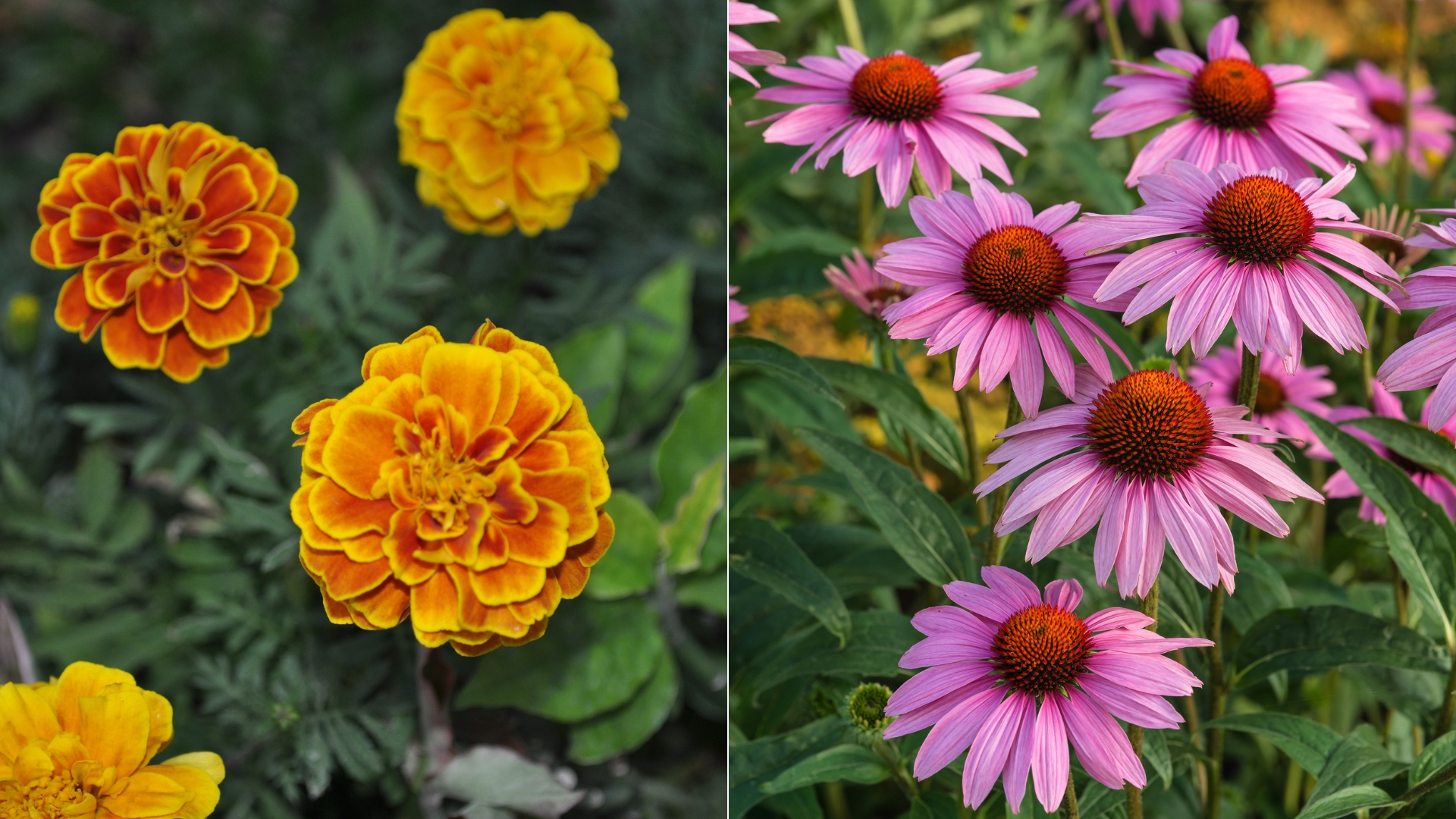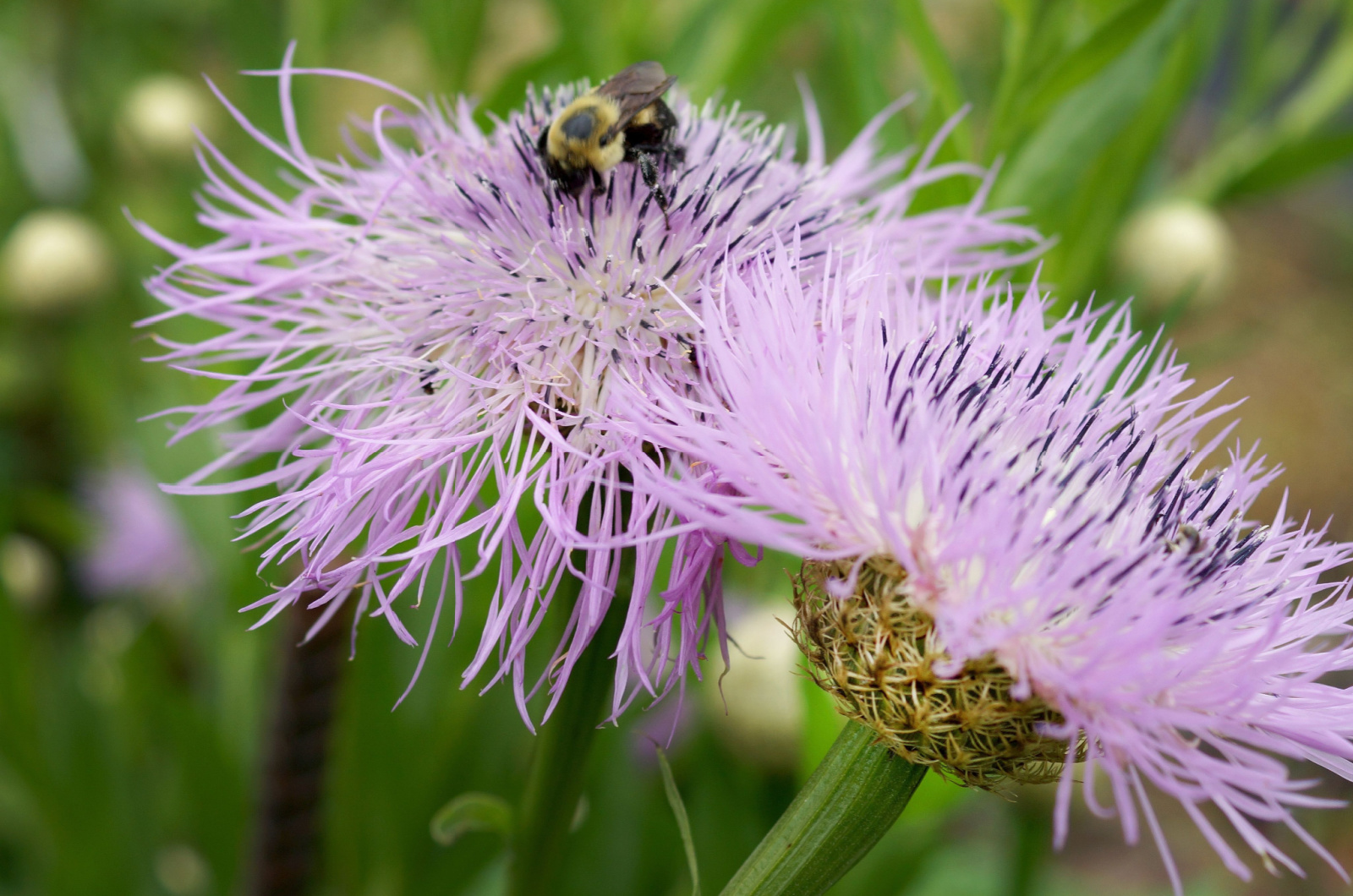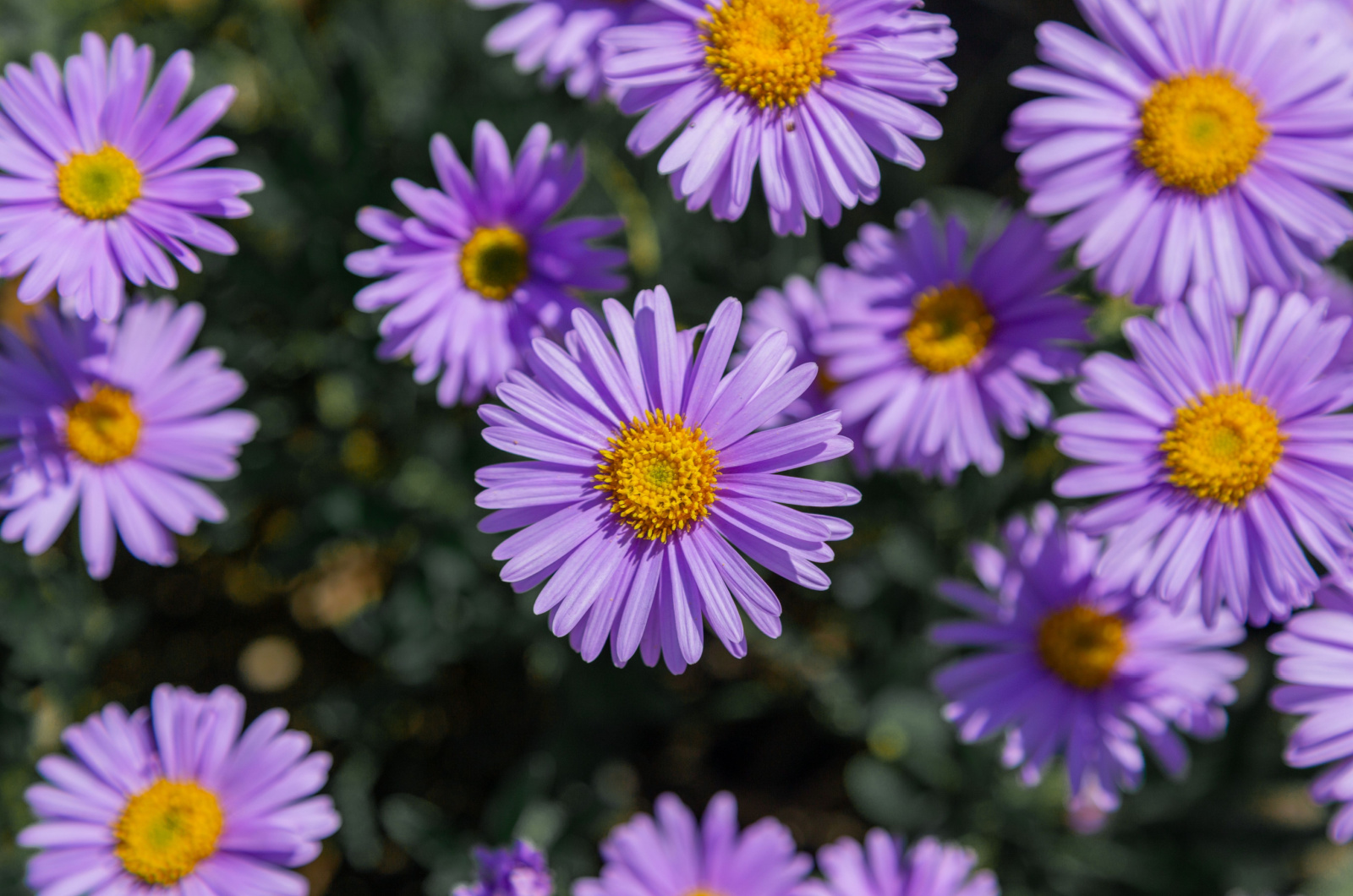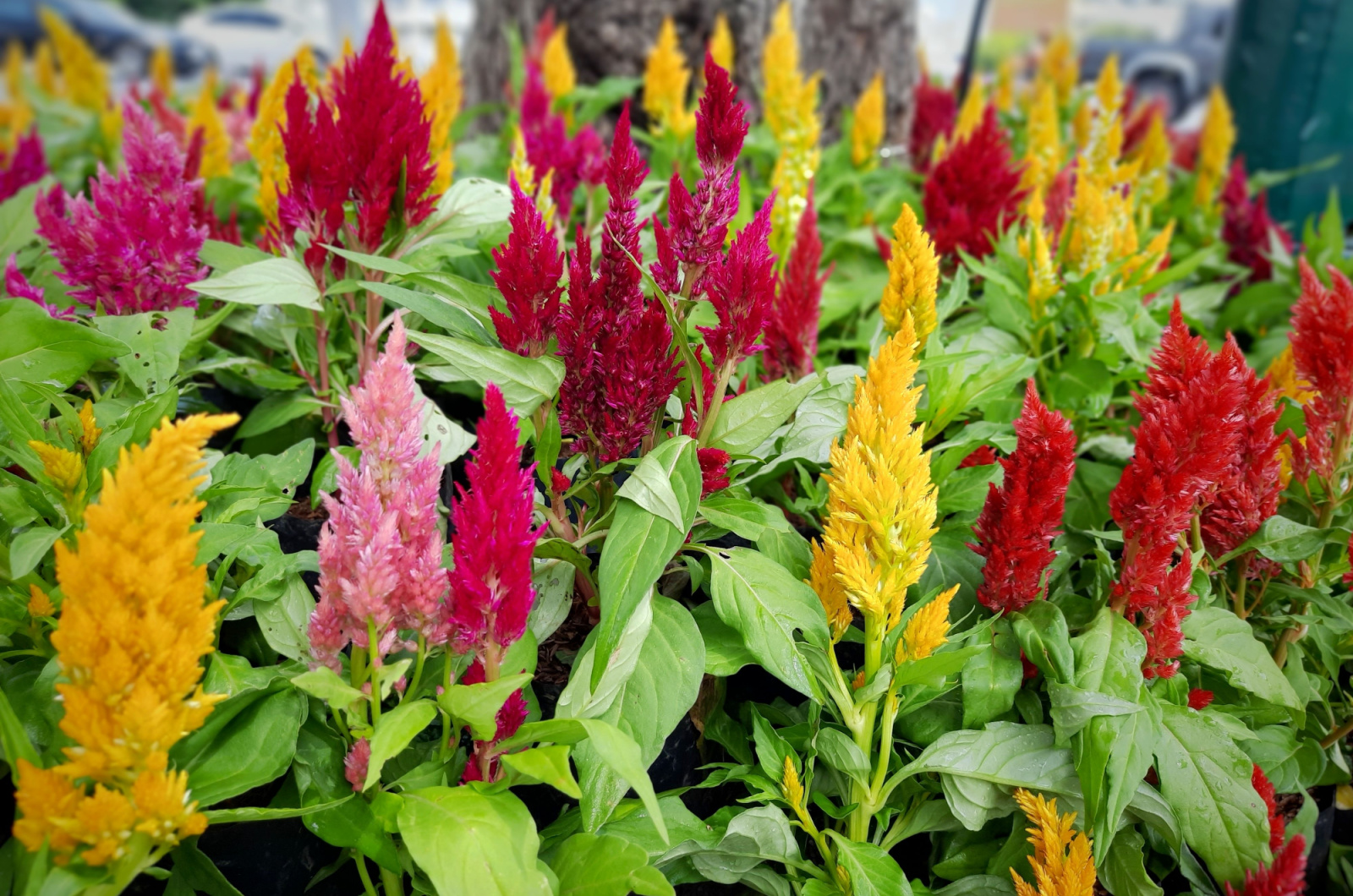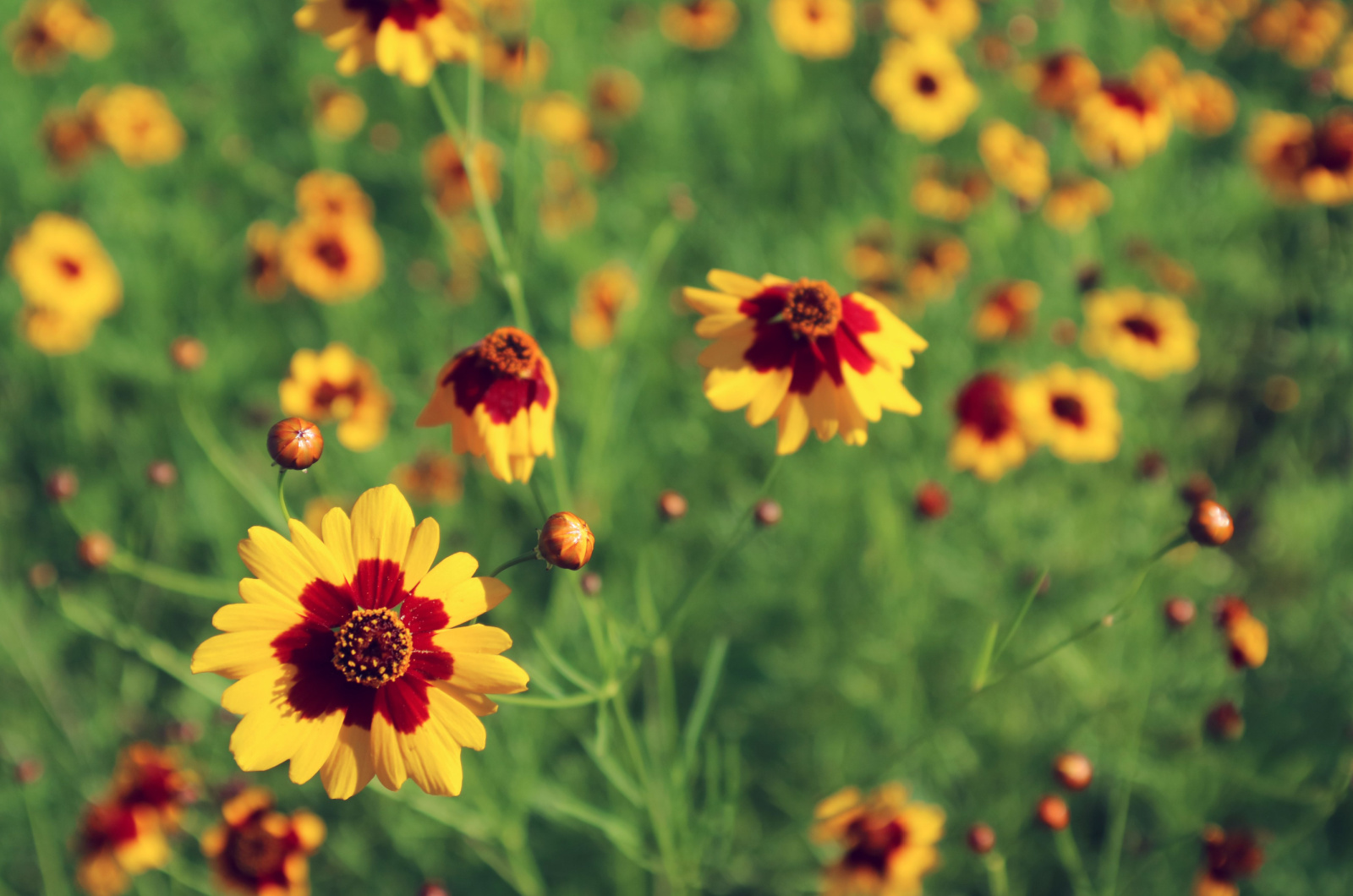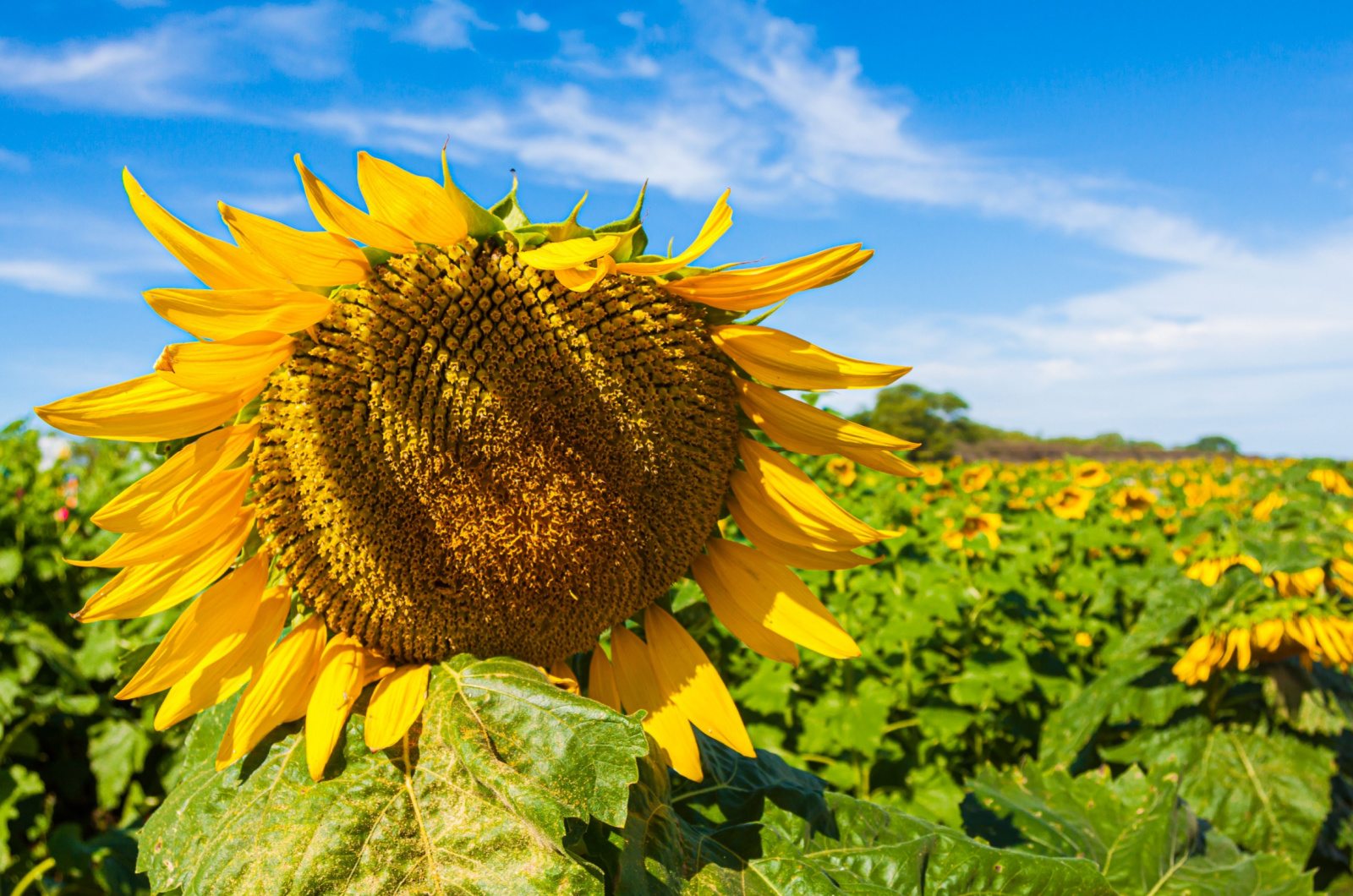Do you want a pop of color in your garden without having to wait years for perennials to establish and shine?
Plant annuals!
These fast-growers are the perfect solution for a colorless decor. And if you go native, you won’t have to spend too much time caring for them. Many of them will even self-seed and come back next year without you lifting a finger.
Here are some choices to get you started!
1. American Basket Flower
Native range: Southern central US and northeastern Mexico
Light Exposure: Full sun
Soil requirements: Well-draining
Lilac or purple flowers and bright green leaves give off a wildflower vibe you won’t be able to pass on.
And the best part about it is that it can tolerate various types of soil as long as they’re well-drained. It flourishes in different climate conditions, from dry to slightly humid.
2. American Marigold
Native range: Mexico and Central America
Light Exposure: Full sun
Soil requirements: Well-drained and loamy
Unlike French marigolds, American ones grow up to 4 feet tall and are an ideal option for bright flower beds.
You can even plant marigolds in a vegetable garden and enjoy their pest-repellent abilities!
American marigold doesn’t require too much maintenance, is somewhat drought-resistant, and will produce plenty of blossoms if you remember to deadhead it.
3. Annual Phlox
Native range: From Texas to Alabama and from Florida to Minnesota
Light Exposure: Full sun or partial shade
Soil requirements: Loose, sandy, nutrient-rich
Annual phlox is a wonderful plant you can add to your bedding or pots. Its compact growth habit, mild fragrance, and low maintenance make it a perfect choice for any setting.
And the best part about annual phlox is that it will self-seed, so you won’t have to replant it year after year.
P.S. Summer heat won’t hurt it at all.
4. Aromatic Aster
Native range: From New York to Montana down to South Carolina and Texas
Light Exposure: Full sun to part shade
Soil requirements: Well-drained, dry or moderately moist
The light violet color of this aromatic aster and its bushy growth go perfectly with your evergreen shrubs.
It blooms from September to November and will attract numerous pollinators during that time.
And if you really want a statement garden, plant a few aromatic aster bushes and shape them into a unique, fragrant, and colorful hedge.
5. Bee Balm
Native range: Eastern North America
Light Exposure: Full sun or partial shade
Soil requirements: Humus-rich and consistently moist
There are many reasons why you should grow bee balm in your garden, and one of them is their incredible ability to attract numerous pollinators.
Others include its fresh citrusy fragrance and tubular-daisy flowers that can last until the end of summer if you remove the spent ones regularly.
6. Black-Eyed Susan
Native range: Most of North America, especially around the east of the Rocky Mountains
Light Exposure: Full sun
Soil requirements: Slightly acidic and moderately dry
The golden flowers of black-eyed Susans will give your garden the wildflower look you’ve always dreamed of.
They grow very fast, attract various pollinators, and don’t require that much care in order to decorate your garden.
Just make sure to give them plenty of sunlight and they’ll decorate your butterfly gardens, containers, borders, or any other landscape setting.
7. Blanket Flower
Native range: Most western states
Light Exposure: Full sun
Soil requirements: Well-draining, rocky or sandy
There are quite a few reasons to grow blanket flowers, from attracting pollinators and a long blooming season to easy maintenance and a gorgeous appearance.
Their fiery looks will go perfectly with your English cottage design or modern landscape filled with tall black-and-white containers.
Keep them in a moist, but well-drained medium, and you’ll be able to enjoy their blossoms throughout summer and into fall.
8. Blue Gilia
Native range: Throughout the western US, from Alaska to Mexico
Light Exposure: Full sun
Soil requirements: Dry, well-drained, rocky or sandy
I don’t know where to start when it comes to blue gilia! Should I mention its blue pollen first? Or its long flowering season that lasts from May to September?
Well, it’s true. This plant has it all! From attracting pollinators to looking gorgeous throughout summer.
And the best part about it is that it prefers rocky and sandy substrates, so it’s perfect for rock gardens. Although, it can tolerate clay soils to some extent, too.
Perfect, isn’t it?
9. California Poppy
Native range: Pacific slope of North America
Light Exposure: Full sun
Soil requirements: Poor and well-drained
Vivid orange blossoms look amazing in mass plantings or individually interspersed with other wildflowers.
They attract native pollinators and can even be grown as perennials in warm climates.
And yet, if you live in a cold region, don’t despair. California poppies readily self-seed, so you’ll have more than enough to admire come next season.
10. Celosia
Native range: Tropical and subtropical America, Arabian Peninsula, and Africa
Light Exposure: Full sun
Soil requirements: Well-drained, nutrient-rich, slightly acidic
The gorgeous fluffy flowers of celosia come in various colors, from red and orange to pink and green.
There are also many companion plants for celosia that you can grow beside it to accentuate its beauty and appeal.
Just make sure it gets direct sunlight for at least eight hours a day and you’ll be able to quickly enjoy its gorgeous burgundy or green foliage and attractive flowerheads.
P.S. Celosia will reseed on its own, so you only have to plant it once.
11. Coneflower
Native range: From southeastern to central US
Light Exposure: Full sun to partial shade
Soil requirements: Loose and well-draining
The Coneflower is one of the great perennials for fall gardens because it doesn’t mind the heat, is fairly drought-tolerant, and will attract numerous pollinators.
It will produce most flowers in full sun conditions, but it can benefit from short afternoon shade, especially in hot climates.
Plant the purple, yellow, or white ones or combine all of them for a gorgeous display.
12. Farewell-To-Spring
Native range: Western North American coastline
Light Exposure: Full sun to light shade
Soil requirements: Well-drained and moderately moist
Farewell-to-spring is native to the hills and mountains of the Pacific coastline, which is why it can tolerate various conditions.
Most importantly, it doesn’t mind sandy or salty, dry soils, which is why it’s perfect for these regions or rock gardens.
It grows pretty fast and adorns your garden with gorgeous pink-red flowers and gray-green leaves.
P.S. You won’t have to intervene and replant it over and over again; it will do that for you.
13. Golden Tickseed
Native range: Southern US
Light Exposure: Full sun
Soil requirements: Sandy or loamy
This annual is perfect for locations with soggy soils and poor drainage because it can tolerate these conditions quite well.
Of course, it will grow best in loose and loamy substrates, but lack of drainage won’t kill it.
Plant it in spring or fall and it will quickly grow and give you a splash of color in no time.
P.S. It is a Florida State Wildflower and it goes along nicely with my other annuals. It reseeds, too.
14. Heartleaf Foamflower
Native range: Eastern US
Light Exposure: Partial to full shade
Soil requirements: Rich, moist, slightly acidic
If you have a shady corner in your garden that won’t accept any plant, try growing the heartleaf foamflower and planting a moonlight garden.
This attraction will look gorgeous day and night, and you’ll be able to use every space in your yard.
You can divide them in fall, use their seeds to propagate them, or let them self-seed on their own.
Note: Foamflowers are self-sterile – sterile to their own pollen – which is why you should plant at least two of them if you want to get seeds.
15. Lacy Phacelia
Native range: Southwestern US and northwestern Mexico
Light Exposure: Full sun to light shade
Soil requirements: Loose, light, fertile, well-drained
This blue annual is like a pollen factory, attracting numerous pollinators to your yard. And its fuzzy flower heads will look great in your wildflower garden.
The plants will spread on their own either by rhizomes or seeds, saving you the trouble of doing it on your own.
They grow well in containers, too, allowing you to move them around your garden for a novel display and decor every day.
16. Sunflower ‘American Giant’
Native range: North and Central America
Light Exposure: Full sun
Soil requirements: Nutrient-rich and moist
This giant sunflower is a perfect statement plant for your yard as it can reach up to 16 feet tall.
It will make your garden stand out and look amazing among the shorter sunflower companion plants.
Plant it in large batches and create a unique privacy screen or intersperse a couple of plants around your garden to give it a feeling of completeness.
17. Texas Indian Paintbrush
Native range: Texas, Louisiana, Oklahoma, Arkansas
Light Exposure: Full sun
Soil requirements: Sandy, loamy, or clay, acidic, well-drained
As long as this plant gets plenty of sunlight, it can tolerate all sorts of soils and weather conditions.
It can be a biennial, so make sure to water it deeply the first year to have a drought-tolerant plant the second year.
Plant it in fall, and you’ll enjoy its vivid-red paintbrushes in spring. And to accentuate their color, combine them with deep-blue wildflowers.
P.S. The Texas Indian paintbrush can steal moisture and nutrients from other plants, so you should grow it in containers if you want to prevent this from happening.
18. Zinnia
Native range: Southwestern US, Mexico, Central America
Light Exposure: Full sun to partial shade
Soil requirements: Nutrient-rich and well-drained
Zinnias are perfect additions to your flower, butterfly, pollinator, and vegetable gardens because they look stunning, grow very quickly, and attract numerous beneficial insects.
There are many companion plants for zinnias you can grow alongside them to accentuate their beauty.
They’re also perfect for container and wildflower gardens, and will keep their colorful heads open throughout summer and into fall.
P.S. It is incredibly easy to grow and looks amazing in vases.
Final Thoughts
Perennials may not require constant replanting, but annuals bring you a small escape from the rut because they can change a landscape just like that.
They grow and flower super-quickly and don’t require any special treatment, especially if you grow native annual flowers.
And these that I’ve mentioned will give you a quick splash of color even if you plant them today!

